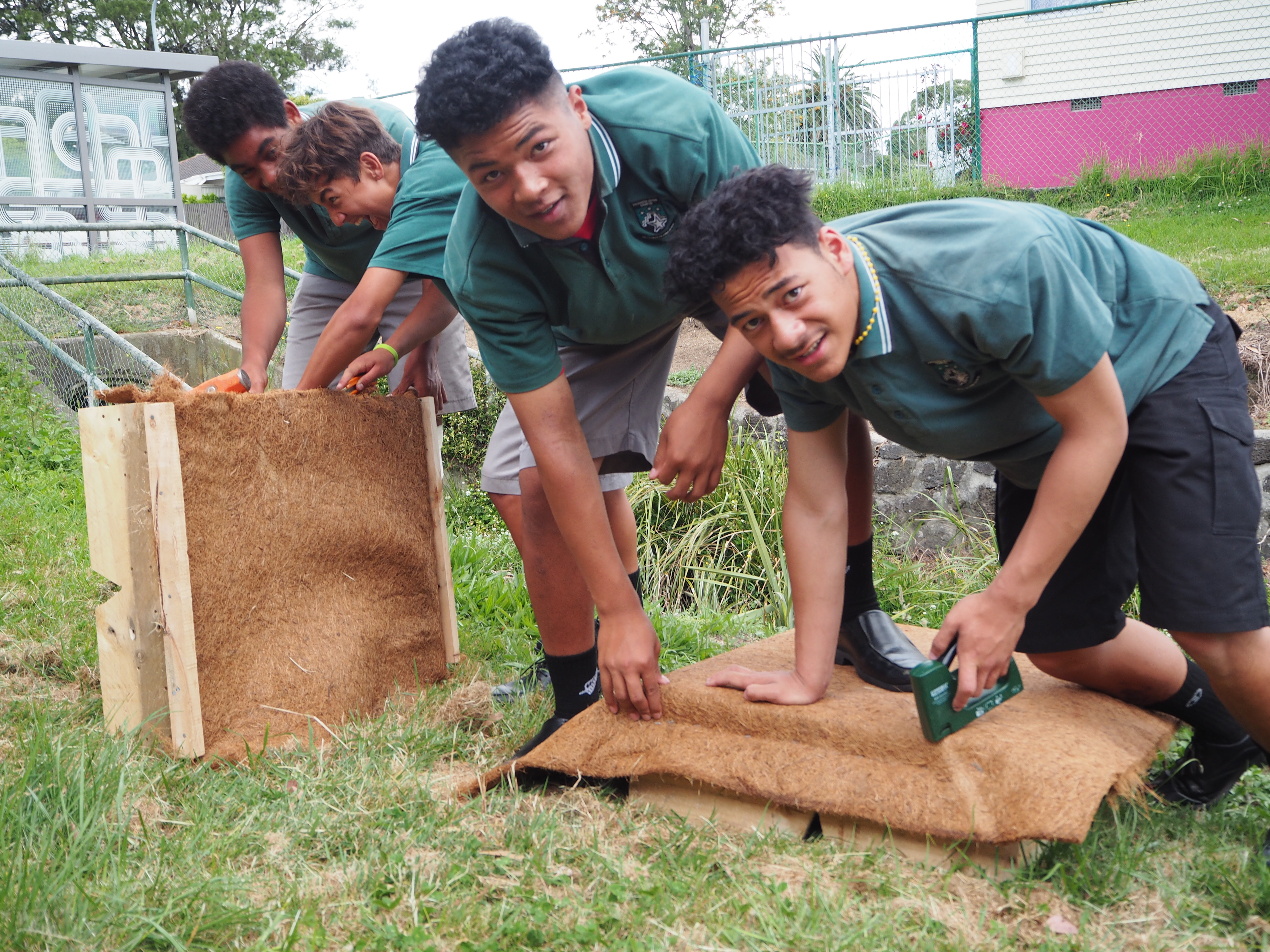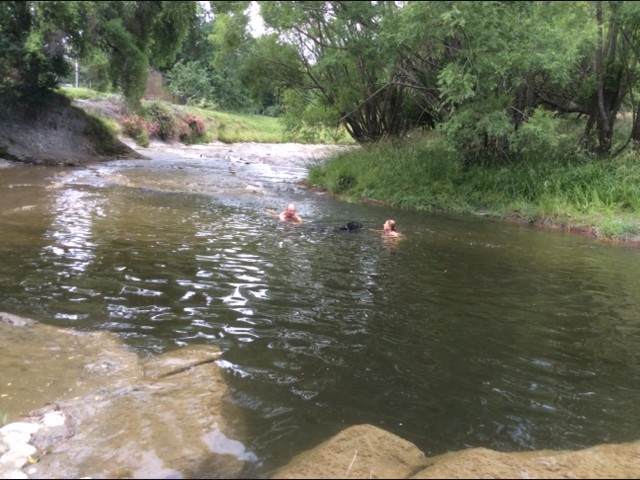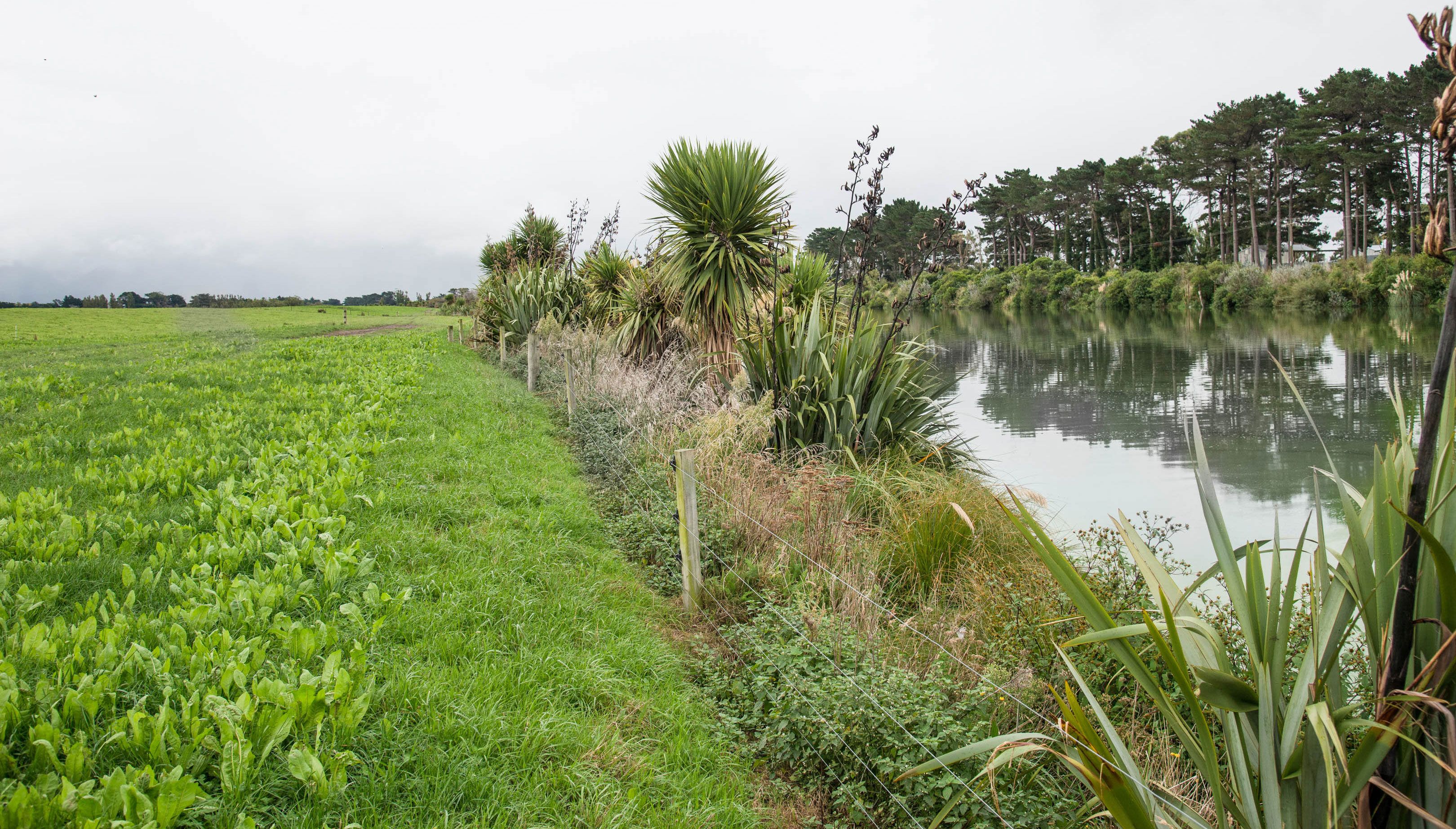Fish back in ‘sad’ city stream
Once used as a dumping ground, Mangere’s ‘ditch’ is taking on a new lease of life.


When Julia Tuineau first saw the Tararata Stream in Mangere she thought “what a sad waterway.”
“It was muddy, was too hot in summer, didn’t have much shade or aquatic life,” she says. “Locals referred to it as ‘the ditch’ and some even used it as a dumping ground.”
Today, thanks to the work of Mangere resident Tuineau and others like her, life is returning to the stream. Shoals of inanga (whitebait) have been spotted, a longfin eel was seen in its water recently for the first time while, in early September, a native fish rare in Auckland streams for many years, a giant kokopu, was discovered.
“These are a couple of the wins we’ve had recently and we’re so excited,” she says.
Tuineau, who started with Auckland Council’s Wai Care programme in 2000 on work to restore polluted streams in south Auckland has, since she retired over three years ago, headed a team of volunteers focused solely on the Tararata Stream.
The project - which involves pest control, planting, weeding, wetland development and the building of fish refuges - has been named as a finalist in the 2019 New Zealand River Story awards run by the Cawthron Institute. The winner is to be announced at a function in Wellington on November 7.
The stream was originally a swampy headwater for a large river that ran into the sea at the Manukau Harbour. But, after European settlement, the area was drained and converted into farmland with much of the land also set aside for residential development.
During this period the river was severely modified and the headwater streams were piped underground creating a highly engineered landscape with no food resources and poor water quality. It became a dump for household litter while stormwater floods caused further damage to the eco-system.
“The stream is all we have left,” says Tuineau. “It’s just a remnant, most of the tributaries have been beheaded (piped underground). Instead the area was grassed and mown, all nice and tidy – but it’s not been a good habitat.”

Tuineau and her volunteers, who became known as the ‘Stream Team’, started restoring it by removing rubbish and planting its banks – the native plantings lowering water temperatures and attracting swarms of native bees.
Support from Wai Care included surveys of fish numbers and re-grading of the stream banks to allow planting for ‘the love zone’ where inanga spawn. Work was also begun to eradicate pests such as rats, mice, hedgehogs and Gambusia fish which eat fish eggs and decimate insects.
A fish refuge was built by putting a wooden pallet into the water. Installed by local students in 2018 it creates a labyrinth effect and provides protection for fish. Meanwhile inanga have been helped by straw-filled bags placed on the stream to encourage spawning.
The NZ Transport Agency has contributed to the project by forming vegetated swales to improve the quality of highway run-off into the stream while Housing NZ homes on its boundary are being replaced by new houses to face the stream, effectively turning it into recreation space.
The Mangere Arts Centre organised the first sign to actually name the stream – previously it was usually called ‘the ditch’.
“It looks different now,” says Tuineau. “Volunteers have put in more than 20,000 trees (including manuka and kanuka), carex (grass) and other natives are holding together what were once crumbling stream banks and people have stopped complaining about a weedy wilderness.”
Although work on the stream is far from finished, Tuineau says change is on the horizon. As well as the sightings of the kokopu and longfin eel, a shoal of an estimated 300 juvenile inanga was seen in the stream.
“Usually we only see around a half a dozen at a time and although I don’t imagine all of them will survive, they obviously feel the water is livable.”
Tuineau says she will continue to pursue her vision for the stream as “a bush-lined more natural channel with a few wriggles, large logs, gravely riffles, pools for fish and a place to be used by schools for studies.
“When the longfin eel was found we had great excitement,” she says. “This is how we know it (the steam) is doing its job and I want to make sure our Mangere streams are not forgotten again. Maybe the best indicator of success is seeing people enjoying Tararata.”






